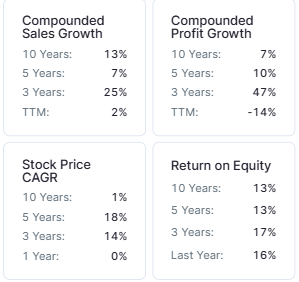Oil and Natural Gas Corporation Ltd. was listed on the NSE on July 19, 1995. In the last five years, its stock has given massive returns of more than 200% to its investors. Will ONGC continue to provide such impressive returns in the future? Let’s explore ONGC’s growth potential and the ONGC share price target 2025 to 2050 in this article.
About ONGC

Oil and Natural Gas Corporation (ONGC) is responsible for the exploration and production of gas and oil. ONGC was founded on August 14, 1956. It explores and collects natural resources both on land and in deep-sea regions. Additionally, the company works in several countries and has international initiatives. In order to lessen the dependency on imported fuel, ONGC provides natural gas and crude oil to refineries and other sectors.
ONGC Business Model
- Sales of Natural Gas and Crude Oil: ONGC extracts and sells natural gas to businesses, including fertilizers and power plants, as well as crude oil to refineries.
- International Operations: By finding and producing oil and gas in other nations through ONGC Videsh, the corporation makes money abroad.
- Petrochemicals & Refining: ONGC makes money from processed oil and gas products by owning shares in petrochemical facilities and refineries.
- LPG & Additional Products: ONGC offers naphtha, LPG, and other petroleum byproducts for both home and commercial use.
- Transportation & Pipeline Services: ONGC makes money by running pipelines that deliver gas and oil to various destinations.
- Renewable Energy & Power Generation: To increase revenue, the corporation makes investments in thermal, solar, and wind power.
ONGC Fundamental Analysis
| Stock Name | ONGC Ltd. |
|---|---|
| NSE Symbol | ONGC |
| Market Cap | ₹ 3,03,499 Cr. |
| 52W High | ₹ 345 |
| 52W Low | ₹ 205 |
| Stock P/E (TTM) | 7.69 |
| Book Value | ₹ 280 |
| Dividend Yield | 5.10 % |
| ROCE | 18.4 % |
| ROE | 16.3 % |
| Face Value | ₹ 5.00 |
| Industry PE | 17.4 |
| Price to book value | 0.85 |
| Debt to equity | 0.54 |
| PEG Ratio | 0.78 |
| Quick ratio | 0.56 |

| Shareholders | March 2023 | March 2024 | March 2025 |
|---|---|---|---|
| Promoters | 58.89% | 58.89% | 58.89% |
| FIIs | 7.97% | 8.88% | 7.11% |
| DIIs | 19.87% | 18.88% | 19.93% |
| Goverment | 10.00% | 10.30% | 10.30% |
| Public | 2.94% | 3.05% | 3.76% |
| No. of Shareholders | 15,48,726 | 17,90,074 | 30,30,759 |
Key Factors Driving ONGC’s Future Growth
- Advanced Exploration Tools: To improve real-time monitoring of onshore and offshore activities, ONGC has set up four 3-D virtual reality facilities, called “Third Eye.” These facilities increase production and development efficiency.
- Enhanced Production Partnerships: In January 2025, BP promised to increase gas production by 89% and oil production by 44% from India’s largest field, managed by ONGC. Over the next ten years, the team hopes to greatly increase productivity.
- Support of Innovative Startups: ONGC makes investments in companies that create advanced energy-related technology. For example, they have provided funding to businesses like Chakr Innovation, which removes pollutants from diesel engines, and String Bio, which turns methane into edible proteins.
- Internal Technical Expertise: ONGC has strong internal capabilities across all aspects of oil and gas production and exploration. This independence can lead to cost savings and less dependency on outside suppliers.
Pros of Investing in ONGC
- Growing Energy Demand – As India’s population and industries grow, more oil and gas will be needed, helping ONGC expand its business.
- New Oil & Gas Discoveries – ONGC is exploring new areas to find more oil and gas, ensuring steady production for the future.
- Expansion in Other Countries – ONGC is investing in oil and gas fields outside India, increasing its earnings from international markets.
- Focus on Natural Gas – As industries move to cleaner energy, ONGC is increasing its natural gas production to meet demand.
- Investment in Renewable Energy – ONGC is putting money into solar, wind, and hydrogen energy to grow in the clean energy sector.
- Support from Government – ONGC benefits from government policies and incentives that help boost domestic oil and gas production.
- Strong Sales Growth: ONGC sales have grown at a 25% CAGR over the last three years.
- Strong Profit Growth: ONGC profits have grown at 47% CAGR over the last three years.
- Low P/B Ratio (Undervalued Stock): ONGC Price to Book Value (P/B) ratio is 0.85, which shows that its stock is trading below its intrinsic value and may be undervalued.
- Low PE Ratio Compared to Peers: ONGC’s PE ratio is 7.69, which is lower than the industry average of 17.4, making it relatively undervalued and potentially a good investment opportunity.
- Attractive Valuation: ONGC stock is currently trading at a PE ratio of 7.69, indicating a fair valuation compared to its earnings.
- Increase in DIIs Holding: DIIs holding increased from 19.40% in December 2024 to 19.93% in March 2025, showing a positive outlook towards ONGC by the DIIs.
Cons of Investing in ONGC
- Depend on World Oil Prices: The price of crude oil on a global scale has a significant impact on ONGC’s earnings. The profitability of the business may be impacted by changes in these prices, which may result in irregular earnings.
- Regulatory Barriers: Because ONGC is a government-owned company, it may be subject to governmental and regulatory actions that have an effect on its business practices and financial results.
- Aging Oil Fields: Due to the advanced age of several of ONGC’s oil fields, output levels are dropping. To continue or boost output, the corporation must make large investments in technology and exploration.
- Environmental Issues: ONGC’s traditional oil and gas business is at long-term risk due to the world’s transition to renewable energy sources.
- Decrease in FIIs Holding: Foreign Institutional Investors (FIIs) have reduced their holding to 7.11% in March 2025 from 7.53% in December 2024, indicating a decline in FII’s confidence in the company’s future growth prospects.
ONGC Ltd Balance Sheet
| Particulars | March 2023 | March 2024 | Sept 2024 |
|---|---|---|---|
| Equity Capital | 6,290 | 6,290 | 6,290 |
| Reserves | 274,357 | 330,780 | 345,986 |
| Borrowings | 142,255 | 153,181 | 191,489 |
| Other Liabilities | 190,212 | 219,523 | 213,848 |
| Total Liabilities | 613,115 | 709,774 | 757,614 |
| Fixed Assets | 250,819 | 298,454 | 350,438 |
| CWIP | 113,945 | 116,022 | 91,497 |
| Investments | 78,873 | 102,207 | 106,077 |
| Other Assets | 169,478 | 193,091 | 209,602 |
| Total Assets | 613,115 | 709,774 | 757,614 |
By the end of 2025, the ONGC share price is expected to be around ₹325 in normal conditions. In a bear market, it might be ₹320, and in a bull market, it may cross its 52-week high of ₹350.
| ONGC Share Price Target 2025 | Rupees (₹) |
|---|---|
| 1st Target | 320 |
| 2nd Target | 325 |
| 3rd Target | 350 |
In 2026, the ONGC share price is expected to be around ₹400 in a normal situation. In a bear market, it might be ₹385, and in a bull market, it may cross ₹455.
| ONGC Share Price Target 2026 | Rupees (₹) |
|---|---|
| 1st Target | 385 |
| 2nd Target | 400 |
| 3rd Target | 455 |
According to our analysis, the ONGC share price is expected to be around ₹490 in 2027. In a bear market, it might be ₹460, and in a bull market, it may cross ₹590.
| ONGC Share Price Target 2027 | Rupees (₹) |
|---|---|
| 1st Target | 460 |
| 2nd Target | 490 |
| 3rd Target | 590 |
According to our analysis, the ONGC share price may trade near ₹580 by 2028; bearish conditions could pull it down to ₹550, while a strong bull run might lift it to ₹765.
| ONGC Share Price Target 2028 | Rupees (₹) |
|---|---|
| 1st Target | 550 |
| 2nd Target | 580 |
| 3rd Target | 765 |
In a normal situation, the ONGC share price is projected to be approximately ₹750 in 2029. In a bear market, the value may be as low as ₹665, while in a bull market, it may rise to ₹1000.
| ONGC Share Price Target 2029 | Rupees (₹) |
|---|---|
| 1st Target | 665 |
| 2nd Target | 750 |
| 3rd Target | 1000 |
In a normal situation, the ONGC share price is projected to be approximately ₹920 in 2030. In a bear market, the value may be as low as ₹800, while in a bull market, it may rise to ₹1300.
| ONGC Share Price Target 2030 | Rupees (₹) |
|---|---|
| 1st Target | 800 |
| 2nd Target | 920 |
| 3rd Target | 1300 |
By 2035, the ONGC share price is projected to be around ₹1950 under normal conditions. In adverse markets, the price could fall to ₹1600, while favorable conditions might push it up to ₹4000.
| ONGC Share Price Target 2035 | Rupees (₹) |
|---|---|
| 1st Target | 1600 |
| 2nd Target | 1950 |
| 3rd Target | 4000 |
Under normal conditions, the ONGC share price might hit ₹4500 by 2040. A bearish trend could lower it to ₹3000, whereas a bullish surge could raise it to ₹12000.
| ONGC Share Price Target 2040 | Rupees (₹) |
|---|---|
| 1st Target | 3000 |
| 2nd Target | 4500 |
| 3rd Target | 12000 |
In 2050, the ONGC share price is expected to be around ₹15500 in a normal situation. In a bear market, it might be ₹12000, and in a bull market, it may go up to ₹40,000.
| ONGC Share Price Target 2050 | Rupees (₹) |
|---|---|
| 1st Target | 12000 |
| 2nd Target | 15500 |
| 3rd Target | 40,000 |
| Years | Target Price |
|---|---|
| ONGC Share Price Target 2025 | ₹ 320 to 350 |
| ONGC Share Price Target 2026 | ₹ 385 to 455 |
| ONGC Share Price Target 2027 | ₹ 460 to 590 |
| ONGC Share Price Target 2028 | ₹ 550 to 765 |
| ONGC Share Price Target 2029 | ₹ 665 to 1000 |
| ONGC Share Price Target 2030 | ₹ 800 to 1300 |
| ONGC Share Price Target 2035 | ₹ 1600 to 4000 |
| ONGC Share Price Target 2040 | ₹ 3000 to 12000 |
| ONGC Share Price Target 2050 | ₹ 12,000 to 40,000 |
Conclusion
ONGC is one of India’s biggest oil and gas companies, playing a key role in the country’s energy sector. It earns money by selling crude oil, natural gas, and other petroleum products. The company is also expanding into renewable energy and international markets. However, ONGC faces challenges like fluctuating oil prices, aging oil fields, and government regulations. While it offers steady dividends and strong government backing, its stock price growth has been slow. Overall, ONGC remains a strong but slow-growing player in the energy industry.
Disclaimer
This article is for educational purposes only. It is not a stock recommendation and should not be treated as such. Please ask your financial advisor before making any investment decision.
Also Read: Tata Power Share Price Target 2025 to 2050

